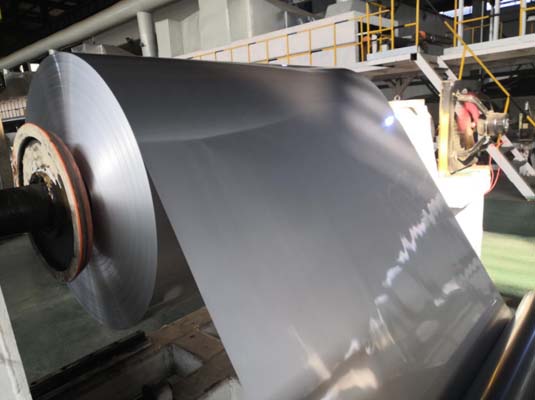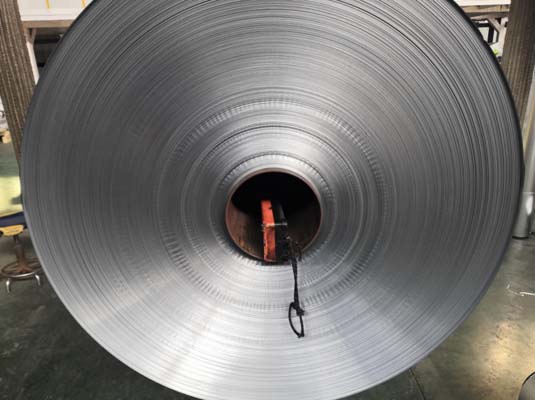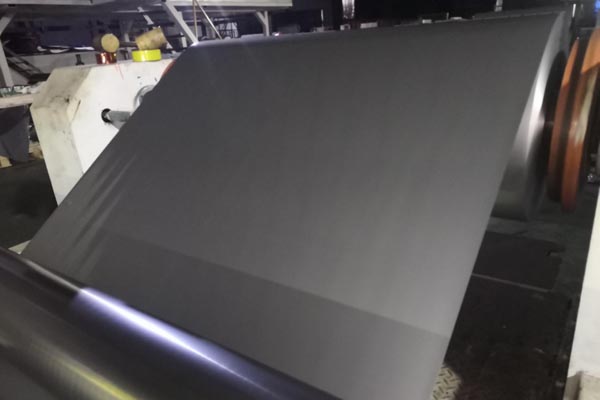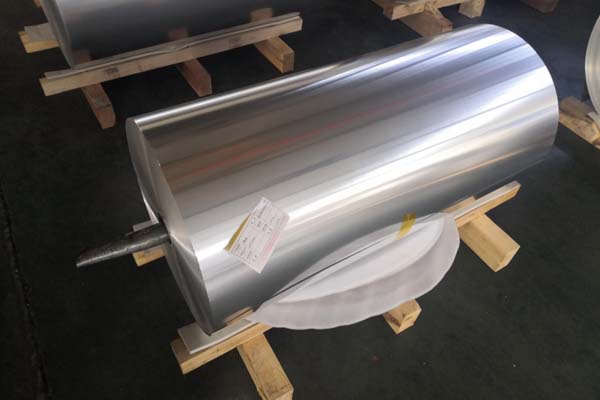Aluminum foil generally refers to aluminum products rolled to a thickness of less than 0.2mm. Different countries have different criteria for dividing thickness limits in this regard. With the gradual improvement of production technology, increasingly thinner aluminum foils have emerged, constantly pushing the limits of aluminum foil thickness.
The classification of aluminum foil can be done using various methods, including thickness, shape, state, or material of the aluminum foil.

Aluminum foil paper roll
When expressed in English, aluminum foil can be categorized as heavy gauge foil, medium gauge foil, and light gauge foil. The specified thickness for heavy, medium, and light gauge foils may vary based on industry standards, applications, and specific requirements.
Foil thickness is typically measured in micrometers (μm) or mils (thousandths of an inch). Below are some general guidelines, but it’s important to note that these values may vary:
Typically, the thickness range for large-sized foil sheets is 25 μm (0.001 inches) and above.
It is commonly used in industrial applications such as insulation, heavy-duty product packaging, and construction.

Heavy Gauge Foil Jumbo Roll
Medium gauge foil typically falls within the range of 9 μm (0.00035 inches) to 25 μm (0.001 inches).
This type of foil is often used in various packaging applications, including food packaging, pharmaceuticals, and other consumer goods.
Light gauge foil is generally thinner, with a thickness below 9 μm (0.00035 inches).
It is often used for delicate packaging needs, such as chocolate wrapping, cigarette packaging, and applications that require thin and flexible materials.
It’s important to note that these are general categories, and specific applications may have different thickness requirements. Manufacturers and industries usually adhere to international or industry-specific standards to ensure the quality and consistency of aluminum foil production.

Light Gauge Foil
In China, manufacturers have an additional classification for aluminum foil thickness:
1. Thick Foil: Foil with a thickness of 0.1 to 0.2mm.
2. Single Zero Foil: Foil with a thickness of 0.01mm and less than 0.1mm (with one zero after the decimal point).
3. Double Zero Foil: Foil with two zeros after the decimal point when measured in mm, typically with thicknesses less than 0.1mm, such as 0.006mm, 0.007mm, and 0.009mm. Examples include widely used 6-micron aluminum foil, 7-micron aluminum foil, and 9-micron aluminum foil, with versatile applications and demand.
Aluminum foil can be divided into rolled aluminum foil and sheet aluminum foil based on its shape. The majority of aluminum foil in deep processing is supplied in rolled form, with sheet aluminum foil being used only in a few manual packaging situations.
Aluminum foil can be divided into hard foil, semi-hard foil and soft foil according to the temper.
Hard foil
Aluminum foil that has not been softened (annealed) after rolling. If it is not degreased, there will be residual oil on the surface. Therefore, rigid foil must be degreased before printing, lamination, and coating. If it is used for forming processing, it can be used directly.
Semi-hard foil
Aluminum foil whose hardness (or strength) is between hard foil and soft foil, usually used for forming processing.
Soft foil
Aluminum foil that has been fully annealed and softened after rolling. The material is soft and there is no residual oil on the surface. Currently, most application fields, such as packaging, composites, electrical materials, etc., use soft foils.

Soft aluminum foil roll
Aluminum foil can be categorized based on its processing states into bare foil, embossed foil, composite foil, coated foil, colored aluminum foil, and printed aluminum foil.
Bare aluminum foil:
Aluminum foil that undergoes no additional processing after rolling, also known as bright foil.

Bare aluminum foil
Embossed foil:
Aluminum foil with various patterns embossed on the surface.
Composite foil:
Aluminum foil bonded with paper, plastic film, or cardboard to form a composite aluminum foil.
Coated foil:
Aluminum foil with various types of resin or paint applied on the surface.
Colored aluminum foil:
Aluminum foil with a single-color coating on the surface.
Printed aluminum foil:
Aluminum foil with various patterns, designs, text, or images formed on the surface through printing. It can be in one color or multiple colors.
Copyright © Huasheng Aluminum 2023. All rights reserved.